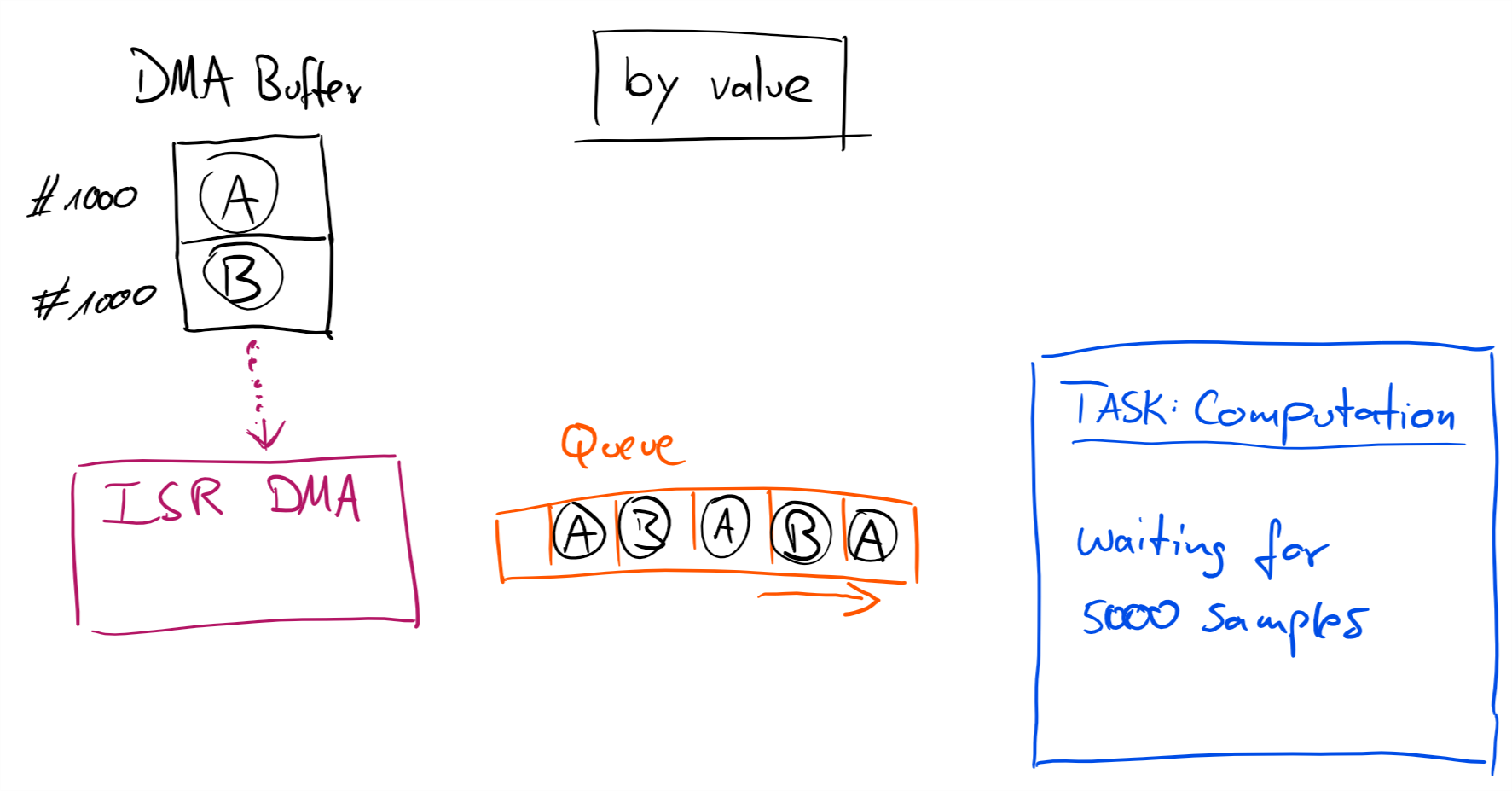Part Number: MSP432P4111
Hi,
I'm continous sampling ADC values and get an interrupt all 1000 samples. These samples I am sending from the ISR via queue. To do this I have two variants:
1. Send the data via queue:
- Dereferencing the completedADCBuffer in the xQueueSendFromISR() with a "*" fails: error #169: argument of type "void" is incompatible with parameter of type "const void *const"
- Normally I avoid this variant because of data coping in the ISR
int main(void)
{
.
.
.
/* Configure the conversion struct */
continuousConversion.arg = NULL;
continuousConversion.adcChannel = Board_ADCBUF0CHANNEL1;
continuousConversion.sampleBuffer = sampleBufferOne;
continuousConversion.sampleBufferTwo = sampleBufferTwo;
continuousConversion.samplesRequestedCount = ADCBUFFERSIZE;
xQueueADC = xQueueCreate( 10, 1000 * 2);// uint16_t => 2 byte unsigned integer
.
.
.
}
void adcBufCallback(ADCBuf_Handle handle, ADCBuf_Conversion *conversion,
void *completedADCBuffer, uint32_t completedChannel) {
if( xQueueADC != 0 )
{
BaseType_t xHigherPriorityTaskWoken;
xHigherPriorityTaskWoken = pdFALSE;
xQueueSendFromISR( xQueueADC, *completedADCBuffer, &xHigherPriorityTaskWoken );
if( xHigherPriorityTaskWoken )
{
portYIELD_FROM_ISR (xHigherPriorityTaskWoken);
}
}
}
2. Send only the data pointer via queue but with more ADC sampleBuffer:
- Is this possible to increase the number of sampleBuffer to 10? I think it needs more than only editing the conversion struct !?
- Is the xQueueCreate() correct?
int main(void)
{
.
.
.
/* Configure the conversion struct */
continuousConversion.arg = NULL;
continuousConversion.adcChannel = Board_ADCBUF0CHANNEL1;
continuousConversion.sampleBuffer1 = sampleBuffer1;
continuousConversion.sampleBuffer2 = sampleBuffer2;
continuousConversion.sampleBuffer3 = sampleBuffer3;
.
.
.
continuousConversion.sampleBuffer10 = sampleBuffer10;
continuousConversion.samplesRequestedCount = ADCBUFFERSIZE;
xQueueADC = xQueueCreate( 10, sizeof(uint16_t ADCBuf[1000] *));// uint16_t => 2 byte unsigned integer
.
.
.
}
void adcBufCallback(ADCBuf_Handle handle, ADCBuf_Conversion *conversion,
void *completedADCBuffer, uint32_t completedChannel) {
if( xQueueADC != 0 )
{
BaseType_t xHigherPriorityTaskWoken;
xHigherPriorityTaskWoken = pdFALSE;
xQueueSendFromISR( xQueueADC, completedADCBuffer, &xHigherPriorityTaskWoken );
if( xHigherPriorityTaskWoken )
{
portYIELD_FROM_ISR (xHigherPriorityTaskWoken);
}
}
}
I would be glad if someone could give me an advice.
Thanks



